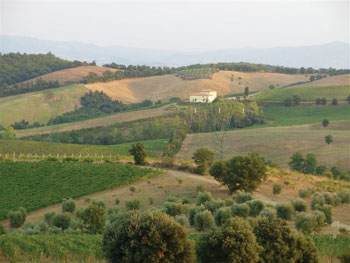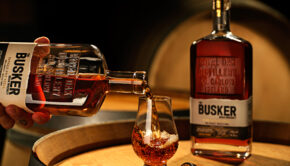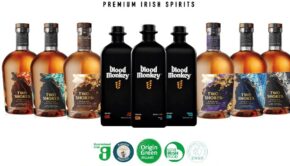Shelflife Special Tasting: Italy
16 June 2010
 The last two years have been pretty awful for wine producers, as they have been for most of the drinks sector. Italy hasn’t been immune but it’s had a few silver linings to the clouds that some other wine producing countries would be happy to shout about.
The last two years have been pretty awful for wine producers, as they have been for most of the drinks sector. Italy hasn’t been immune but it’s had a few silver linings to the clouds that some other wine producing countries would be happy to shout about.
In part, that’s because there was a large well of interest in Italian wine among consumers which had begun to be tapped before recession hit, with Italy staging a number of serious promotional campaigns, such as the Definitive Italian Tasting events in London, or the series of road shows staged in Australia, the Far East and the United States. Although there was a fall in global sales of Italian wine, the market for sparkling wine actually grew by 15%, mainly driven by prosecco. Italy has now moved ahead of France in the UK market and now has the fourth largest share, with France now at fifth. Meantime, there is no sign of falling off in the demand for pinot grigio, although many producers are aware that fashion is a fickle thing and are anxious that pinot grigio doesn’t cannibalise sales of other wines and, also, that there will be other varieties to take the place of pinot grigio when the craze died down- as it inevitably must, some day.
Italy has 6% of the Irish market, with 440,000 cases sold last year. Despite all the economic horrors, volume sales rose by 2.5%, with value increasing by almost one quarter. There’s no doubt that interest in Italy’s food and culture has been hugely helpful in driving sales, while suppliers and promoters of Italian wine have not been shy, even during the last 12 months, of holding promotions which show the best bottlings, rather than being tempted to cut costs by offering tasters wines of less quality. A couple of very successful consumer tastings have been held- by the Corkscrew off licence, for example, and by Chianti maker Dievole- at which consumers paid considerable sums of money to taste premium Italians. In fact, these paid-for consumer tastings appear to have generally increased in number last year and that, surely is an encouraging trend.
In Ireland, the Italian Trade Office (ICE) has been running tutored tastings for the trade around the country and here I have to declare an interest, as I was involved with the presentation of the events. Around 50 Italian wines were tasted during the sessions, most of them premium, with huge support from the wine importing sector, indicating that they believe this kind of marketing for wine is useful. “Giving off-licencees a bit of a context for the wines gives them information which they can use to push even the everyday stuff,” said one.
Quite apart from the ICE initiative, the importers of Italian wine have been quite active this year with a number of new wines being brought to the Irish market. Even if it hadn’t been in the interest of fairness to have completely separate tastings for this feature- they were tasted blind- it was no problem to find additional labels to show the huge variety Italian producers are offering right now.
Whites
Calvarino La Rocca Soave Classico 2006/7 Veneto (Liberty €16.60 trade) Yes, it’s Soave and, yes, it’s expensive. But acidity is beautifully balanced with elegant citrus and light yellow fruit flavours. Worth the effort of hand selling- or drink it as a treat for yourself.
Toledana Gavi 2008 Piemonte (Gleeson) Despite its price point, Gavi too often tends to be a bit non-descript. In part, this is due to the slightly neutral character of its grape, cortest, but, frankly, lack of concentration is often as much to blame. Tasted blind in a short line up, this one came through very nicely, with decent intensity on the palate and green fruit and citrus flavours. Great with grilled cod or hake.
Les Cretes Petite Arvine 2008 Valle d’Aosta (Le Caveau, Kilkenny, €16 retail) The alpine Valle d’Aosta is Italy’s smallest wine producing region, although local initiatives are currently working toward increasing both quality and volumes. Wine producers here are known as vignerons, although the influences are as much Swiss as French. Steely, with zesty grapefruit and almost asparagus like flavours, this offers something off-beat to the customer and is lovely with white fish and salads.
Colli di Catone Frascati 2009 Lazio (Febvre €8.45 trade) Italy’s ultimate quaffing wine but one that can be a bit underrated. This is a perfect aperitif but also great with prawns, crab and white pasta dishes.
Sartarelli Verdicchio di Castelli dei Jesi 2008 Marche (Nicholson, €16 retail) From close to the Adriatic coast, this classic white has zesty grapefruit flavours and good intensity and length. Italy’s favourite fish wine style, by a top maker.
Litorale Vermentino 2008 Toscana (Cassidy €9 trade) Tuscany is red wine country and a lot of makers don’t bother much about white. But vermentino, which is actually the French rolle, has a long history here and often indicates a wine of more interest than your average Tuscan white. See what you think by trying this- it balances soft apricot fruit with decent acidity and it’s good with light pasta dishes.
 Reds
Reds
Fontanafredda Barbera d’Alba 2008 Piemonte (Mackenway €12 trade) Barbera is the quaffing wine of Piedmont, although top bottlings can be pricey. Traditionally enjoyed with boiled meats, this one fits the bill, with lively cherry, ripe tomato and plum flavours.
Pio Cesare Nebbiolo Langhe 2006 Piemonte (Cassidy €18 trade) Barolo, produced from 100% nebbiolo, is one of the world’s great classic reds. This is a wine from the larger regional DOC; it isn’t cheap but it offers the chance to sample a wine, which is not far off Barolo quality, for significantly less money. For consumers who find the dry tannins of Barolo a bit off-putting, it’s also more approachable- but without losing too much of the traditional style. Tasty, with lovely cherry fruit and good length, it’s a classy wine for a special meat dish.
Moris Farms Morellino di Scansano 2008 Toscana (Nicholson €14 retail) Morellino is a clone of sangiovese and Scansano is an area in southern Tuscany where traditional farming and vine cultivation have held sway since its marshes were drained in the early 20th century. Since the DOC was founded in 1978, it’s always been one of Italy’s most enjoyable reds and this, along with Le Pupille, is one of its oldest estates.
Castello Monaci Primitivo Salento 2008 Puglia (Gilbeys €8 trade) It’s hard to find a good Italian that’s genuinely close to entry point prices, but this is one; tasty stuff, with plum, cherry and decent structure for the money.
Peppoli Chianti Classico 2007 Toscana (Findlater €10.40 trade) From big house Antinori, this is nevertheless one of the most consistent and well priced Chiantis you’ll find. A good restaurant choice, as it’s versatile with food and tends to please both traditional Chianti lovers as well as those who like a lively fruit style.
Elena Walch Lagrein 2008 Alto Adige (Quintessential €11 trade) Tasted blind, this was a very distinctive wine, with firm red currant flavours and some red apple-like sweetness. Nice drunk on its own, it’s also good with turkey and pork. For drinkers who like to try something different.




 Print
Print





Fans 0
Followers